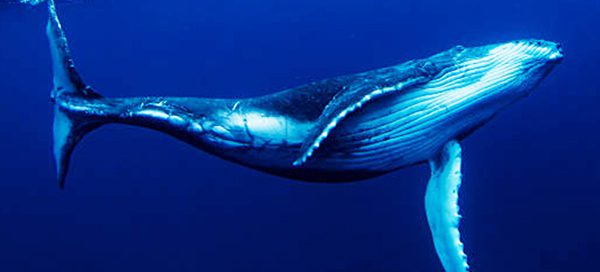Humpback Whales Early Arrival to Maui

Every winter, thousands of humpback whales travel to the warm, shallow waters of Hawai‘i to mate, give birth, and raise their young. Seeing a whale in September is rare, but not a fluke (pun intended), it does happen, with activity continuing through April, and sometimes into May. While the whales are in residence, they put on a quite a display. There is nothing quite as spectacular in nature as a 45 ton whale breaching out of the water and coming down in a thunderous splash.
So let's take an in-depth dive to learn more about these majestic mammals. We've also included some fun facts.

Interacting with Pacific Humpback Whales
Humpbacks spend over 90% of their lives under the surface of the water, according to the National Oceanic and Atmospheric Association (NOAA). They are often called "gentle giants" because of the tendency of these large mammals to glide peacefully while underwater. But make no mistake about the power of these large cetaceans—they can cruise at 5 knots when underway, and also hurl their massive bodies completely airborne above the surface.
To respect our ocean environment, we endeavor to not adversely affect any marine species we may encounter. An understandable love for whales might tempt snorkelers, divers or people on boats to get close to them. However, Pacific Humpback whales are protected under the Marine Mammal Protection Act. Federal law specifies that whales cannot be approached within 100 yards. It is permissible for a whale to approach a boat, just not the other way around. Pacific Humpbacks are not considered aggressive toward humans. If whales should approach you while in the water, do keep in mind they are wild animals, and refrain from touching or following them. An inadvertent tail slap or fin movement may pose a great risk to snorkelers and divers. There is also risk of disease transfer from whale to human and vice versa.
A quiet observation of these gentle giants is quite magical. Also, we often hear the mystical sounds of humpbacks “singing” while in the water, or on a boat equipped with a hydrophone, even when we don’t see them.

Flippin' Fun Whale Facts
Here are 10 interesting facts about the Pacific Humpback whales you might observe in Hawaii.
- Humpbacks have hair! One of the things that distinguish whales as a marine mammal is the fact they have hair (the other is live births). Hair follicles are located in the fist-sized bumps on their head and pectoral fins, called “tubercles.” Each tubercle has one hair connected to sensitive nerves. While we don’t know exactly the hair’s function, they could serve a multitude of sensory purposes.
2. No eating in Hawaii. Every year, over 10,000 humpbacks annually migrate to the warm, shallow waters of Maui. After feeding all summer in Alaska, they make the trek southward to the warm waters of Hawaii to mate and give birth. They do not feed while in Hawaii.
3. How they eat. Baleen whales, including the humpback (Megaptera novaeangliae), have plates with bristles attached to them inside their mouth that capture small prey like fish, krill, salmon, herring and mackerel. Humpbacks have from 270 to 400 darkly colored baleen plates on each side of their mouths.
4. Great fishers. While you won't see this in Hawaii, before arriving whales hunt using a technique known as bubble net fishing — a group of humpback whales swim around their prey in a circle and blow bubbles around their prey in order to herd the fish into a tight ball, then scoop up the prey
5. A unique Baleen feature. Another characteristic that is unique to baleen whales such as the humpback is the presence of two blowholes on top of their heads.
6. Lots of earwax! A column of earwax over a foot long prevents water from entering the whale’s ear-canal during dives.
7. Females are bigger than males. Female fully grown humpback whales are approximately 49 to 52 feet while males are slightly smaller at 43 to 46 feet.
8. Offspring are huge! Newborn humpback calves are about 20 feet long and weigh about 2 tons! They nurse for about six months.
9. Their unique “signature” Like a human fingerprint, the tail of each humpback whale is unique and scientists record photos of tail flukes for identification purposes. We can then see who is a return visitor and who is new to the pod.
10. Who is that singing? The “humpback song” consists of sequences of sounds that, to the human ear may sound like moans, cries and howls. These sounds are repeated over and over in a pattern, and can be heard for miles. Research shows that it is the males who are singing while in Hawaii’s breeding grounds.

We are so lucky to live in peaceful cohabitation with Pacific Humpack Whales for several months each year in waters around Maui.
October 15th, 2021 | Environment, Ocean, Wildlife




